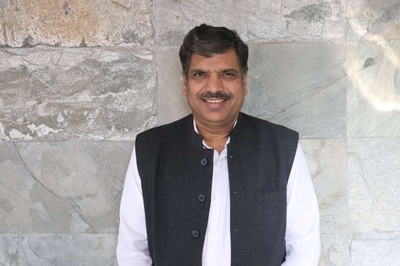Mumbai : Rising temperatures, erratic weather patterns, and increasing frequency of natural disasters like floods, cyclones and droughts induced by climate change are impacting millions of lives around the world, but children, the most vulnerable section of the population, are bearing the brunt of this man-made crisis. In India, where over 30% of the population is under the age of 14, the ramifications of climate change on children’s health, safety, and future opportunities are devastating, said Sumanta Kar, CEO, SOS Children’s Villages India, on occasion of Earth Day 2025.
Highlighting the link between climate change and child vulnerability, Sumanta Kar said: Children living in marginalised communities are disproportionately affected by climate change. Many of them already struggle with poverty, malnutrition, and lack of access to education and healthcare. Climate change exacerbates these challenges, making their survival and development even more precarious. In recent years, India has witnessed floods in Assam and Bihar, cyclones along its coasts, and droughts in Maharashtra and Rajasthan. Each of these disasters has left thousands of children homeless, deprived of education and exposed to hunger and disease.
He added: As climate disasters displace millions, children face the trauma of losing their homes, communities, and even families. Displacement disrupts their education, increases their risk of exploitation, and pushes them into hazardous labour or even trafficking. For children who have already lost parental care, the impact is much more severe. The absence of a stable home and caregiving environment significantly affects their psychological well-being, leading to long-term emotional and cognitive challenges.
Education is one of the most powerful tools to break the cycle of poverty, yet climate change is severely disrupting children’s learning opportunities, Sumanta Kar emphasized. Schools are often destroyed or converted into relief camps during climate-related disasters, leading to prolonged periods of disruption. Children forced into migration struggle to enrol in new schools, and many drop out permanently due to economic hardships.
The world must recognise the urgent need to address the impact of climate change on vulnerable children. Governments, corporations, and civil society must work together to develop child-centered climate policies. Investing in climate adaptation strategies such as strengthening disaster preparedness, improving healthcare access, and ensuring every child has a safe, nurturing environment is not just a moral imperative but an investment in our collective future, Sumanta Kar said.
Investing in disaster preparedness is crucial to protecting children from the devastating effects of climate change. Child-friendly emergency spaces, and community-based disaster response plans can significantly reduce casualties and long-term trauma. Schools and childcare institutions must be equipped with evacuation plans and safety drills to ensure children know how to respond to climate-related emergencies. Additionally, training caregivers and local communities in disaster resilience can help mitigate the impact of extreme weather events and safeguard children’s futures, Sumanta Kar added.

